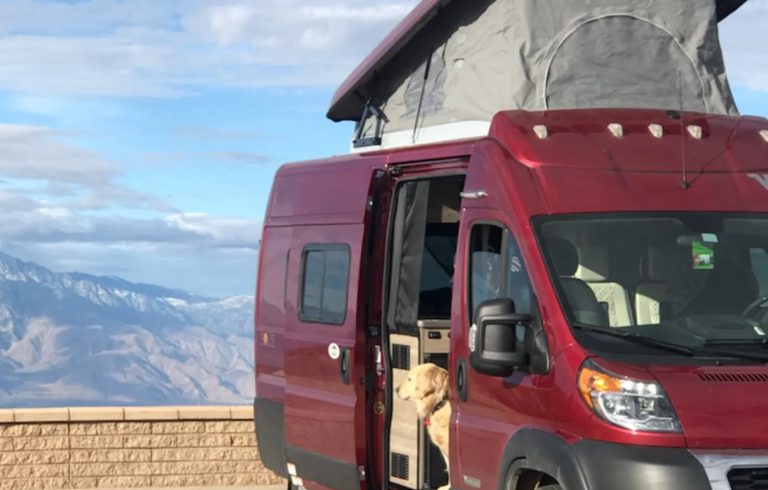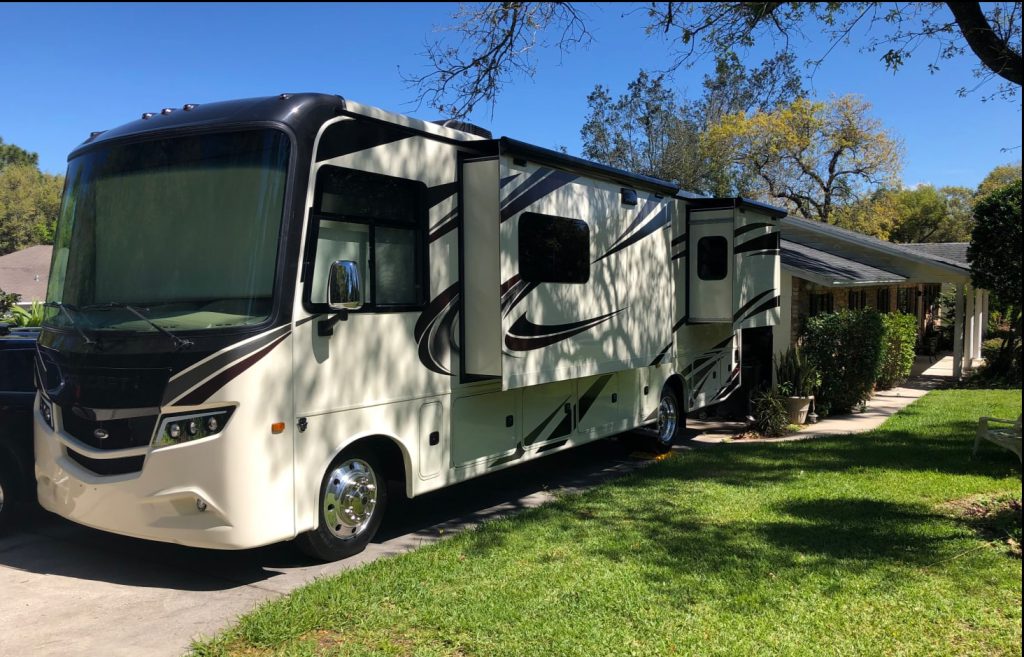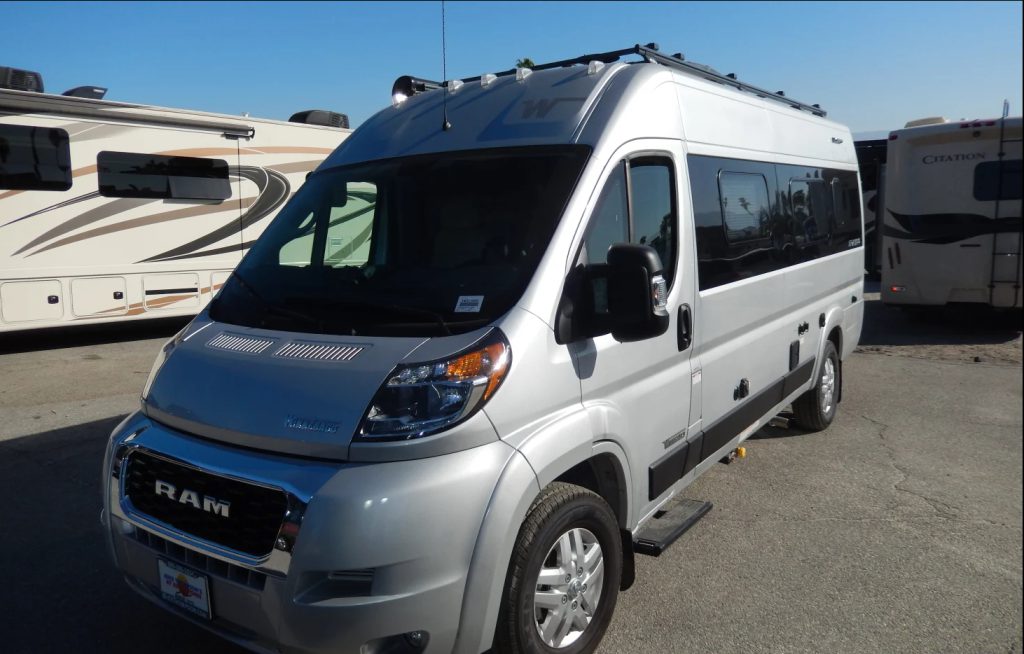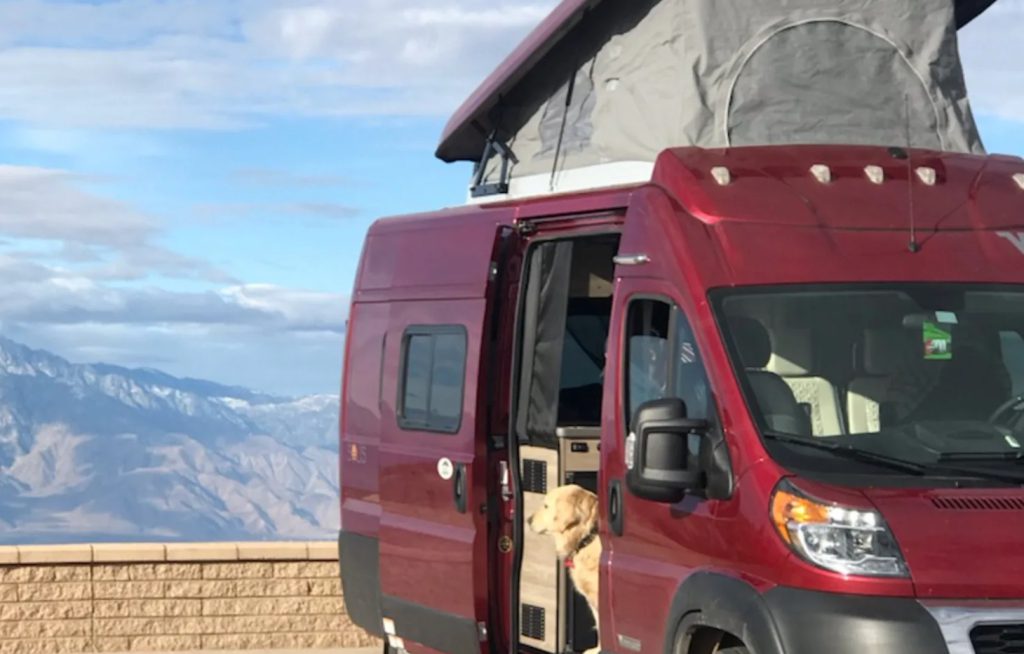
The world of RVing can be overwhelming for those who are just jumping in. There are all kinds of things to learn before your first RV trip.
The very first thing you need to learn about? The types of RVs out there. After all, you can’t very well know which kind of RV you’d like to have without knowing what your options are.
The first question to ask yourself is whether you prefer a driveable RV ( a motorhome) or if you’d rather have a towable (a trailer). Of course, if you want a towable, you will need to make sure you have a truck capable of pulling it safely. Because trucks are expensive and many people don’t want a truck they only use for camping, a driveable RV is the best option for many. This is especially true for those who plan on renting the RV and taking it to the destination themselves.
All that said, even if you narrow down your choices to include only drivable RVs, there are still a few different types with dozens of different floor plans and other options. That is where this article comes into play.
Below, we dive into the facts on drivable RVs, teaching you about the different types, helping you decide which option might be best for you, and helping you understand the ins and outs of driving a motorhome.

Drivable RV Types
First, let’s take a look at the different types of drivable RVs out there. This will help you further narrow down your options so you know just what you’re looking for when you start shopping for an RV to rent or buy.
Class A RV
Generally speaking, class As are the biggest of the drivable RVs (though there are some smaller models out there). These are the motorhomes that look like buses and are often referred to as coaches. They tend to offer the most living space, but also have the biggest learning curve when it comes to learning to drive them. Because the wheels of a class A sit under or even behind the driver, learning to steer one of these rigs is a bit trickier and oversteering is quite common. That said, because class A RVs have wheels in the very front and very back, they also tend to bump, sway, and wander over the road less.
Class C RV
The class C RV is what many people think of when they think “motorhome.” This is the rig that looks a lot like a moving van. They are built on a van chassis and have a piece that juts out over the cab to make space for a bed, or sometimes an entertainment center. Class C RVs drive a lot like a van, making them relatively easy to drive when it comes to steering and many people are more comfortable sitting behind the front wheels. That said, because many class C RVs have a long overhang behind the back wheels, it is not at all uncommon to experience a lot of bouncing and swaying and wandering in your lane (and sometimes out of it) is very easy to do.
Class B RV or Campervan
Finally, there is the class B RV, or campervan. This is a much smaller rig, typically built into a cargo van and it drives just like a cargo van would, making it a great option for those who need something nimble that can fit pretty much anywhere. They don’t have slides and there isn’t much room for many amenities or extras. Instead, they provide just the basics in an easy-to-drive vehicle that can take you adventuring anywhere.

The Benefits of Small Drivable RVs vs the Benefits of Large Drivable RVs
Still not sure which option is right for you? Not to worry, we have more things for you to consider.
Another way to narrow things down is to decide how big you’d like your rig to be. That said, it’s pretty hard to know the answer to this without understanding what the pros and cons of each are. For this reason, we’re using this section to explain the benefits of both smaller RVs and larger RVs.
Benefits of Small Drivable RVs
Let’s start by listing our favorite benefits of camping in a small motorhome. If these benefits appeal to you, a small class C or campervan might be the best pick for you.
Easier to Drive
Class B and smaller class C RVs are easier to drive than the bigger rigs out there. They are built on van chassis, meaning they drive very much like a van—and of course, the smaller the rig is, the easier it is to maneuver. Because a class C is boxier and has the overhang we mentioned before, it will be a bit trickier to get used to than a class B, still a small class C is going to offer a more familiar driving experience than a class A.
More Parking Available
Finding parking for an enormous rig is a pain in the neck. Some parking lots simply will not be able to accommodate you, and squeezing into others will be dangerous and tedious. Smaller RVs, on the other hand, can park pretty much anywhere, meaning the smaller your motorhome is, the more parking options you’ll have.
Good for Off-Road Driving
Another thing small RVs can do more easily? Drive off-road. If you plan to do a lot of boondocking on undeveloped land, this can be a major bonus, so be sure to keep camping locations in mind when choosing the size of your RV. If you do want to take the rig off-road, try to find one that offer high clearance. More hefty tires and suspension are also a major bonus.
Benefits of Large Drivable RVs
What about a bigger motorhome? Well, there are several benefits to having a larger home-on-wheels as well. If the pros listed below sound like something you’d enjoy, go for a class A or at least a larger class C.
More Storage Space
Generally speaking, the bigger your RV is, the more storage space you’re going to have. Therefore, if you plan to go on adventures with a lot of people or you want to be on the road for long periods of time, a larger motorhome with more storage bays might be your best bet.
Extra Amenities
Another thing that fits better in a bigger motorhome? More amenities. If you’re looking to have plenty of seating options, a bathtub, a large sink, and an oven, you’ll almost certainly be better off in a class C or class A rather than a campervan.
Room to Spread Out
If you’ll be spending lots of time in your RV, you’ll probably get tired of being in close quarters with family pretty quickly. For this reason, you’ll likely want to look into a larger motorhome that allows everyone to spread out and have their own space. This is especially nice when the weather isn’t great and everyone finds themselves stuck indoors.

Other Things to Look For in a Drivable RV
So far, we’ve discussed the types of drivable RVs, as well as the pros and cons of large RVs versus their smaller counterparts. This information has probably given you a decent idea of what you’re looking for, but there are more things to consider.
These include:
Floor Plan
Be sure to consider the way the interior of the RV is set up. Think about day-to-day life in the RV, where everyone will sleep and sit, and how your family will fit into each floor plan you consider. Find one that will accommodate you comfortably, but if finding parking easily is important, keep total rig size in mind as well.
Storage Space
Because RVs are such small living spaces, storage space is very valuable. Keep storage in mind when RV shopping and make sure any RV you buy has enough space for everything you need to take along on an RV trip. You might even take an RV packing list RV shopping with you so you can visualize where each item on the list will live
Amenities
If you have specific amenities in mind, make a list of those so you don’t accidentally miss any. Some popular amenities include a bathtub, an RV prepped for solar, lithium batteries, heated seating, and fold-away furniture. Of course, budget is a factor too and you might have to sacrifice some amenities. In that case, keep in mind that many amenities can be added down the line.
Holding Tank Sizes
If you plan on boondocking, the size of your holding tanks becomes very important. Make sure you look into the size of the tanks on any RV you buy. The bigger tanks you can find, the better off you’ll be, but keep in mind the fact that vans and other small rigs will almost certainly have smaller tanks.
Fuel Type
In the case of drivable RVs, you’ll also want to consider fuel type. Diesel RVs tend to be stronger and do better on mountains. That said, regular gas is often cheaper and is easier to find anywhere. Additionally, the repairs on a diesel vehicle tend to be more expensive and finding a diesel mechanic can be a challenge in some places.
Gas Mileage
If you plan on traveling long distances, gas mileage can be another important factor to consider. As you might have guessed, smaller RVs almost always get better gas mileage, but this isn’t the only factor, so be sure to look at this before purchasing if it is something that matters to you.
Cargo Carrying Capacity
Your cargo carrying capacity (CCC) is how much you can safely carry. Class A RVs have much higher CCCs than class Cs or class Bs, making them the best bet if you need to carry a lot of people and/or stuff. The CCC on a class C can be very limited and the weight of the people riding in the RV counts toward the cargo weight, so keep that in mind as you shop.
Tow Rating
You’ll also want to look at the tow rating of each drivable RV you consider. If you plan to tow a small car around, this number is very important, as it tells you how much weight your RV can safely tow, letting you know what kind of car you might be able to have.

Tips for Driving an RV
Once you decide on an RV, the next step is learning how to drive it. Fortunately, driving a motorhome is not nearly as intimidating as you might think. In fact, once you get used to driving your RV, you might be tempted to drive further away and explore new places because getting there is just so easy and comfortable.
Here are our top tips for driving an RV:
Find a Place to Practice
First things first, you need to practice. We don’t recommend hitting the highway right away if you can help it. Instead, find a big, open parking lot. Work to adjust your mirrors just right, practice making turns to learn how much space you need, and get a feel for how the motorhome accelerates and brakes. From there, you can try driving on a smaller, less busy road before heading out onto the highway.
Get an RV GPS
An RV-specific GPS is a great tool to have. This will ensure you don’t end up on a route with low clearance bridges or insanely steep grades, getting you to your destination as safely as possible. The RV Life GPS app is one excellent example of an RV GPS and it pairs with RV Trip Wizard, which is an incredible RV trip planning tool.
Make Wide Turns
We mentioned practicing turns above, but we feel we should reiterate how important it is that you understand your turn radius and learn how to work with it. Always give yourself plenty of space to make a turn (especially when leaving a gas pump) and take tricky turns slowly, so you can back up if you aren’t quite going to make it. Keep tail swing in mind. Your back end can swing quite wide when driving a big rig.
Have a Spotter
When in doubt, have your spotter get out. Backing into campsites can be extremely tricky and sometimes it can be hard to tell if you’ll fit under the covering over the gas pumps or low hanging branches. We recommend having your passenger get out and help you make your way through these types of situations. To avoid shouting at one another, consider calling each other or using two way radios, so your sitter can talk you through the process and let you know when to stop.
Never Let Your Gas Run Low
It’s no secret that RVs need a lot more fuel than your average vehicle. Because of this and since many RVers tend to prefer traveling in remote areas where gas stations can be scarce, it is very important that you keep your tank topped up. We recommend filling up when you hit ¼ tank. You can also do some research before you leave, so you know if there are any areas without gas stations along your route and can prepare accordingly.
Pay Attention to the Weather
Before your trip, check the weather report. Make sure there is not rain or snow in the forecast, as both of these things can make driving a big rig much more dangerous. If you do see that inclement weather is rolling in, consider rescheduling your trip or leaving a bit earlier to avoid the storm.
Know Your Size
Tunnels, low-clearance bridges, and bridges with weight limits can be a bit nerve-wracking when you’re driving an RV. Make sure you know how tall you are and how much your motorhome weighs when loaded (you can get weighed at any location with CAT scales) before you hit the road. This will make it easier to determine if a route is safe for your rig.
Slow and Steady
When driving an RV, slow is always the way to go. Go ahead and get all the way over to the right. Pick a speed around 55 or 60 mph and stick to it. Other people will go around you, but that’s okay. It’s better to take things a hit more slowly and stay safe than it is to get there a little bit faster.
Be Prepared for Wind and Vacuums
When driving a bigger vehicle like a motorhome, the wind can really push you around. Be aware of this and avoid driving on especially windy days if possible. If you do find yourself in a windy area, slow down and remember that mountains, overpasses, and other obstructions might block wind temporarily, but it will come back with a vengeance once you pass the obstruction.
Another phenomenon that drivers of large vehicles experience? Vacuums caused by other large vehicles. Be prepared for passing semi trucks to pull you in as they approach and push you away as they leave you behind. This can be frightening if you don’t know to expect it.
Leave Space, Brake Early
Motorhomes are big and heavy, and they don’t stop as quickly as a small car. For this reason, it is extremely important that you leave a nice, big cushion of space between you and the car in front of you. Not only that, you will want to pay careful attention so you can begin braking earlier than you normally would. This will help you avoid rear-ending other vehicles, keeping you and those around you safe.
Hopefully this article helped you get a better understanding of drivable RVs. With this information you should be better able to pick the right RV for you and drive it safely, wherever your adventures should take you.
Still not sure which RV is right for you? Consider renting one of each type of motorhome so you can make your RV purchase confidentially, knowing you have the right information to make the right choice.

